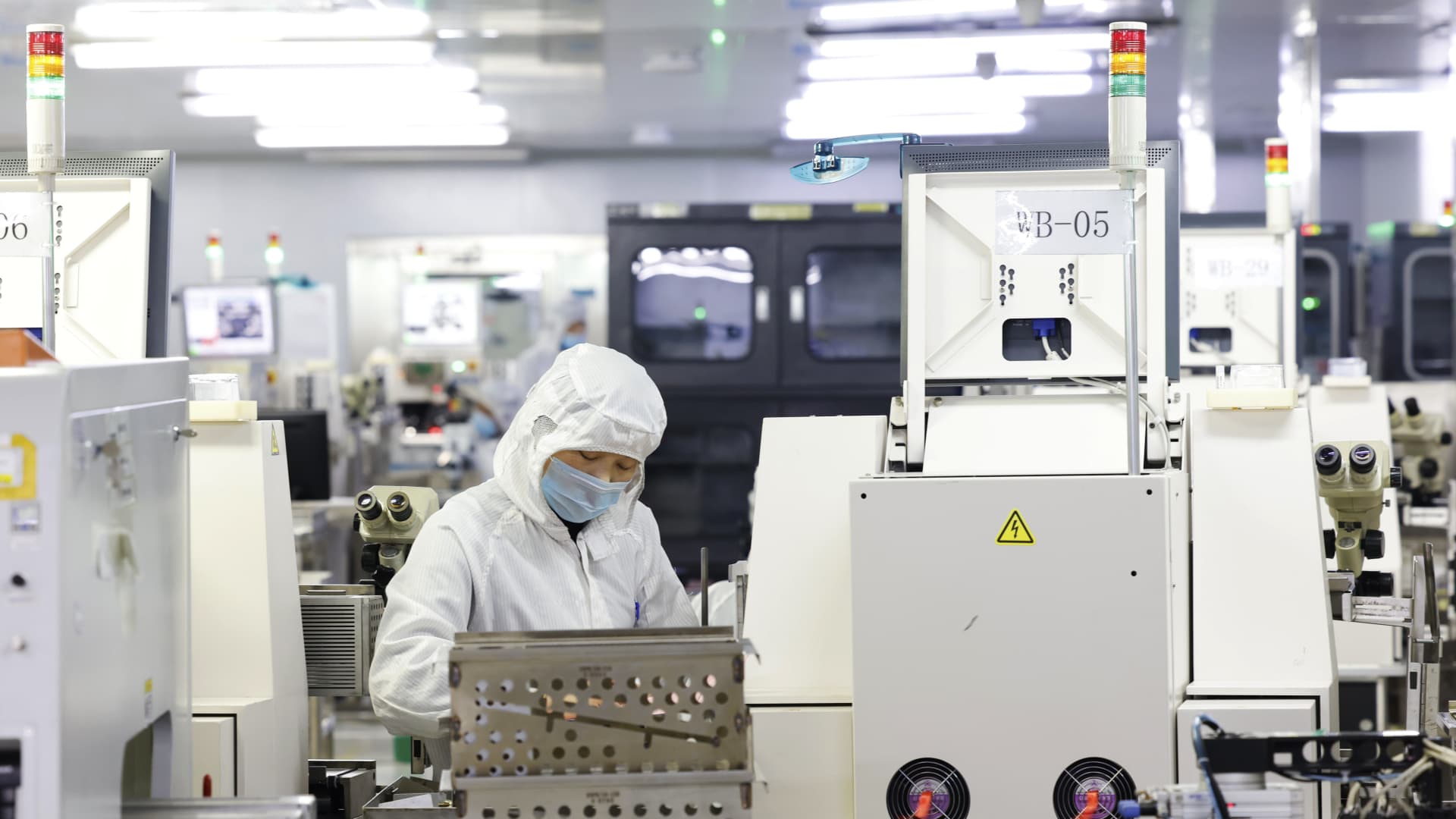BEIJING — China is so far behind the U.S. in semiconductor technology that some investors are betting on startups to fill that gap.
The U.S. this month imposed new restrictions to maintain a lead over China in advanced chip technology. While the rules immediately cut into U.S. and Chinese business revenue, they only affect firms selling the most advanced semiconductor technology, analysts pointed out.
The bulk of Chinese demand is for chips with far simpler tech, they said, and Chinese companies are still small players right now.
That gap leaves a large market opportunity far more insulated from U.S. restrictions — and one that Chinese startups can tap, some venture capitalists said.
Interest from investment funds
Vertex Ventures China is one firm that’s raised money from overseas investors to buy into the idea.
The firm has raised nearly $500 million for a new China tech fund set to close by early next year — more than earlier plans for $400 million, said Tay Choon Chong, managing partner and head of Vertex Ventures China.
In China right now, what is the disruption? The biggest disruption is the West is not going to give technology to China. We see this as the best opportunity for us.Tay Choon ChongManaging partner, Vertex Ventures China
“In China right now, what is the disruption?” he said. “The biggest disruption is the West is not going to give technology to China. We see this as the best opportunity for us.”
Chinese chips businesses can see double-digit growth annually since the market is worth tens of billions of dollars, Tay said, noting China imports about $400 billion worth of chips a year.
He said specific areas of opportunity include chips that magnify phone signals, or control screens in cars.
Another firm putting international money into China’s chips industry is WestSummit Capital Management, which says its strategy didn’t change when the new U.S. rules came out.
That’s because WestSummit only invests in chips made with mature technologies — for mass market, civilian use, said Bo Du, managing director at the firm.
Mature category chips use older technology and are generally less sophisticated than the most advanced chips, whose use in consumer products today is mostly in top-end smartphones and personal computers.
He said 79% of the global chip market falls under the mature technologies category — a share that increases to 94% if just looking at automobile chips. Du was a senior engineer at U.S. chipmaker AMD, among other prior roles in the industry.
He claimed WestSummit-backed GigaDevice Semiconductor is one of the Chinese companies well-positioned to capture the mature market.
The stock is down about 50% for 2022 but is up more than 2% so far this week despite a broad market decline.
U.S. restricts China chips
China accounts for about 40% of global chip demand each year, according to a Natixis report.
However, Chinese companies only have a 5.2% share of the global supply — mostly in the lower-end of the industry, the report said.
“The [new U.S.] rules make it more lucrative to develop non-U.S. chip making technology because it means less policy restriction and uncertainty,” said Alex Liang, partner at the law firm Broad and Bright in Beijing.
“However, chip-making is a mature technology that has been developed many years. It is hard to separate the U.S. and non-U.S. technology after all those years of intertwining development.”
The U.S. has taken multiple steps this year to limit China’s tech capabilities.
The Biden administration has named China a strategic competitor, following the Trump administration’s blacklisting of specific companies such as China’s biggest chipmaker, Semiconductor Manufacturing International Corporation.
To “develop everything from scratch I would say the latest move probably would have set China back by more than 5 years,” said Patrick Chen, head of research for CLSA in Taiwan.
Some products, such as cars, may have to sacrifice some non-essential artificial intelligence features for now, he said, although the manufacturers could keep basic sensors or micro controlling units since they don’t use the most advanced chips.
Looming risks
Despite the large market opportunity, early-stage investment in Chinese chip startups still face risks from potential lawsuits and the complexity of the technology itself, Vertex’s Tay said. He said a company needs to make sure it has enough expertise and money for its products to reach the market in time.
Others are more skeptical.
The complex and wide-ranging chips supply chain has become a hot — and speculative — area of investment in China since Beijing began to emphasize tech self-reliance.
On top of a perceived bubble in the market last year, it is difficult to identify which startups might succeed, said Hongye Wang, China-based partner at venture capital firm Antler. He described the odds as about 10 in 1,000 — or about 1%.
Wang said that like most VCs in China this year, he hasn’t made any investments this year, partly because Covid restrictions limited in-person meetings with entrepreneurs.
“I believe the market for high-tech startups would be even better than the year before Covid-19, because this market is holding too much money for those tech startups,” he said.
For many Chinese companies trying to survive today, the consequences of U.S. actions are still being sorted out. The sweeping new U.S. rules target everything from Chinese chipmakers’ American employees to foreign companies that sell to China.
One sub-sector paying closer attention is the so-called fabless Chinese chip companies that rely on outsourcing manufacturing to operate, said Chen Deng, partner at Hylands Law Firm. She said those businesses now have to look beyond a simple revenue exposure model for assessing compliance risk.
